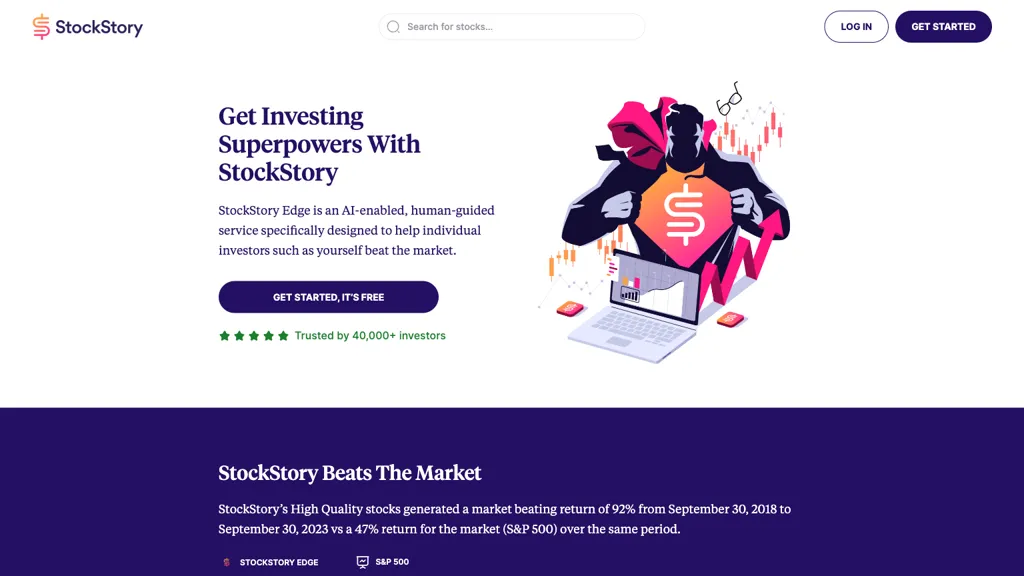20 Great Tips On Choosing AI Stock Predictions Analysis Websites
20 Great Tips On Choosing AI Stock Predictions Analysis Websites
Blog Article
Top 10 Tips To Evaluate The Data Quality And Sources Of Ai Stock Predicting/Analyzing Trading Platforms
To ensure accurate and reliable insight, it is important to examine the quality of data sources as well as AI-driven stock trading platforms. Inaccurate data can lead to poor predictions, financial losses, or even a lack of trust towards the platform. These are the top 10 suggestions for evaluating data quality and sources:
1. Verify the data sources
Check the source of the data. Check to see if the platform is using trusted and reliable sources of data, such as Bloomberg, Reuters or Morningstar.
Transparency. A platform that is transparent must be able to disclose all sources of its data and ensure that they are kept up-to-date.
Beware of dependency on a single source: Trustworthy platforms often aggregate data from multiple sources in order to lessen bias and errors.
2. Assess Data Freshness
Real-time or. delayed data: Find out whether the platform is providing actual-time data, or delayed data. Real-time trading demands real-time data, whereas delayed data is sufficient for long-term analysis.
Update frequency: Make sure to check the frequency with the time that data is updated.
The accuracy of data from the past Verify that the data is consistent and free of irregularities or gaps.
3. Evaluate Data Completeness
Find out if there is missing or incorrect information.
Coverage - Make sure the platform you select covers all stocks, indices and markets relevant to trading strategy.
Corporate actions: Verify if the platform records dividends, stock splits, mergers as well as other corporate actions.
4. Accuracy of test data
Cross-verify data: Compare data from the platform to other sources of data you trust to assure that the data is consistent.
Error detection: Search for incorrect pricing, mismatched financial metrics, or unusual outliers.
Backtesting: You may use old data to test trading strategies. Check if they match your expectations.
5. Take a look at the data Granularity
Detail: Make sure the platform provides granular information like intraday prices and volume, spreads, bid and ask, and depth of the order book.
Financial metrics: Determine whether your platform provides complete financial reports (income statement and balance sheet) as well important ratios like P/E/P/B/ROE. ).
6. Check for Data Preprocessing and Cleaning
Data normalization. Make sure that the platform is normalizing data to keep it consistent (e.g. by making adjustments to dividends, splits).
Outlier handling: Find out how the platform handles outliers or anomalies that are within the data.
Missing data imputation Verify that your platform uses solid methods to fill in the data that is missing.
7. Examine data consistency
All data should be aligned with the same timezone. This will avoid discrepancies.
Format consistency: Ensure the data is formatted consistently.
Check for consistency across markets: Examine data from different exchanges and/or markets.
8. Relevance of Data
Relevance to your trading strategy: The data should be aligned with your trading style (e.g., technical analysis or fundamental analysis, quantitative modeling).
Features Selection: Find out if the platform provides relevant features, such as sentiment analysis, economic indicators and news information that will enhance forecasts.
Check the integrity and security of your data
Data encryption: Make sure your platform has encryption in place for data transmission and storage.
Tamper-proofing: Make sure that the data is not altered or modified by the platform.
Conformity: Determine if the platform complies with laws on data protection (e.g. GDPR or CCPPA, etc.).).
10. Check out the AI model on the platform Transparency
Explainability: Make sure the platform offers you insight on the AI model's use of data in making predictions.
Check if there is a bias detection feature.
Performance metrics. Analyze the performance metrics like precision, accuracy, and recall to determine the reliability of the platform.
Bonus Tips:
Feedback from users and reputation Review user reviews and feedback to assess the platform's reliability.
Trial period. Use the free trial to explore the features and data quality of your platform prior to deciding to buy.
Customer Support: Make sure that the platform provides a robust support system for customers to resolve data-related issues.
These tips will allow you to assess the quality, the sources, and the accuracy of AI-based stock prediction platforms. Take a look at the best his response for website info including ai trading, ai stock picker, ai for stock predictions, ai stock market, ai investing app, ai investing app, incite, ai stock trading app, best ai stock trading bot free, ai stock market and more.
Top 10 Ways To Evaluate The Ability To Scale Ai Platform For Predicting/Analyzing Trade Platforms
It is important to assess the performance and scalability of AI-driven trading and stock forecasting platforms. This will help ensure that they can manage the growing volume of data, market complexity, and the demands of users. Here are 10 top tips for evaluating scalability.
1. Evaluate Data Handling Capacity
TIP: Find out if the platform is able to process and analyze large datasets (e.g., historic stock data, live market feeds, as well as alternative data like news or social media).
The reason: Scalable platforms need to manage increasing volumes of data without performance degradation.
2. Test the Real-Time Processing Capabilities of your processor
See how the platform handles real-time data streams such as stock prices and breaking news.
What is the reason? Analyzing in real-time is crucial to make trading decisions. delays could result in miss opportunities.
3. Cloud Infrastructure and Elasticity: Check it out
Tips: Find out if the platform uses cloud-based infrastructure (e.g., AWS, Google Cloud, Azure) and can scale resources dynamically.
Cloud platforms provide flexibility. The system can be scaled up or back down in accordance with the need.
4. Algorithm Efficiency
Tips: Find out the effectiveness of AI models utilized to make predictions (e.g. Deep Learning and Reinforcement Learning).
Why? Complex algorithms can be resource-intensive. Optimizing them so that they make them scalable is important.
5. Examine Parallel and Distributed Computing
Tip: Check if the platform supports parallel processing or distributed computing frameworks (e.g., Apache Spark, Hadoop).
What is the reason? They can accelerate data processing across multiple nodes.
6. Review API Integration and Interoperability
TIP: Examine the integration of the platform with external APIs.
Why: The platform is able to adapt to changes in data sources and trading environments because of seamless integration.
7. Analyze User Load Handling
Use a high-traffic simulation to test how the platform reacts under stress.
What's the reason? A platform that is scalable must maintain performance, even when users grow.
8. Assessment of Model Retraining and adaptability
Tip Assess how frequently the AI models can be trained on new data.
What's the reason? As markets shift, models must be updated rapidly to remain accurate.
9. Check Fault Tolerance (Fault Tolerance) and Redundancy
Tip. Make sure that your platform is equipped with failover systems and redundancy to handle hardware or software failures.
Why is that downtime in trading is costly, which is why fault tolerance is crucial for the scalability.
10. Monitor Cost Efficiency
Tip: Evaluate the cost of expanding the platform, such as cloud resources, data storage, and computing power.
What is the reason? Scalability must come at a cost that's affordable. This means that you must balance efficiency against cost.
Bonus Tip Future-Proofing
ensuring that the platform will be able to handle the latest technology (e.g. advanced NLP quantum computing) and changes in regulatory requirements.
These aspects can help you assess the scaleability of AI-powered stock prediction systems and trading platforms. They will also ensure they're reliable, efficient capable of expansion and are future-proof. Have a look at the recommended ai stock predictions examples for more advice including trading ai tool, free ai tool for stock market india, best ai penny stocks, ai investment tools, ai share trading, best ai stock prediction, stock trading ai, trading ai tool, ai options trading, ai stock analysis and more.